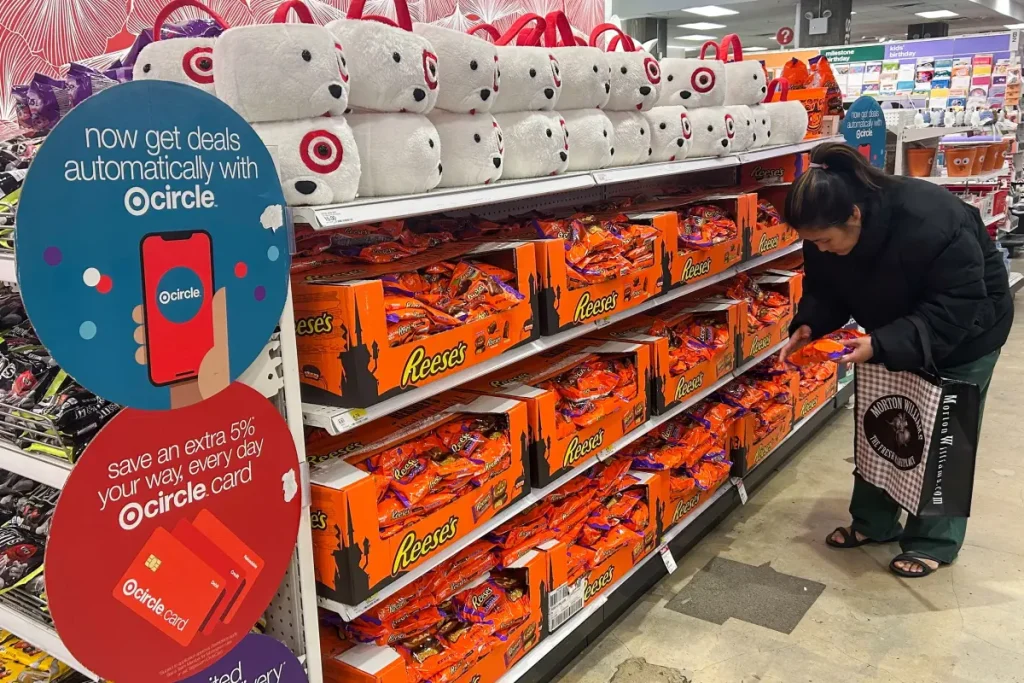Trick or Treat Economics: How Rising Chocolate Costs Are Reshaping Halloween
As Halloween approaches, American families are noticing a significant change in their candy shopping experience. Retailers across the nation are increasing discounts on Hershey products in response to the candymaker’s price hikes—a direct result of new tariffs and skyrocketing cocoa costs. By early October, data from Datasembly revealed that over half of Hershey’s candy offerings had been marked down by at least one major mass retailer, indicating unusual pricing pressure during what should be the industry’s most profitable season. Investment bank Jeffries has identified Hershey as among the food manufacturers with the most dramatic increases in discounted product volume in the weeks leading up to Halloween. This discounting strategy comes at a critical time when chocolate candy sales have remained flat despite an 8% price increase, suggesting consumers are becoming increasingly price-sensitive. The situation has become so concerning that Hershey CEO Kirk Tanner publicly acknowledged disappointing Halloween sales during a recent earnings call, promising to reconsider the company’s seasonal strategies moving forward.
The financial reality behind these shifts is striking—chocolate costs have surged nearly 30% since last Halloween and a staggering 78% compared to five years ago. This far outpaces general inflation, with candy and gum prices overall rising 39% since February 2020. For the average family planning to distribute treats to neighborhood children, this translates to a typical 100-piece bag of assorted Halloween candy now costing $16.39, up from just $9.19 in 2020. This dramatic 78% price increase in four years has forced many households to reconsider their Halloween budgets and candy-buying habits. The price spike can’t be attributed to any single factor but rather a perfect storm of economic pressures: new tariffs affecting imported ingredients, persistent grocery inflation across all food categories, and most significantly, a global cocoa shortage. Poor harvests in West Africa, where approximately 70% of the world’s cocoa is grown, combined with climate change impacts on growing regions, have created supply chain challenges that experts believe may continue for the foreseeable future.
In response to these unprecedented cost pressures, candy manufacturers have deployed various strategies to maintain profitability while trying to keep consumers from experiencing sticker shock. Some have embraced the controversial practice of “shrinkflation”—reducing package sizes or individual candy dimensions while maintaining similar price points. Others are diversifying their product lines to reduce dependence on cocoa-heavy formulations. Industry innovation has accelerated, with companies introducing more fruit-flavored candies, sour varieties, chili-infused treats, and goo-filled novelties that use less chocolate. White chocolate and crème-based alternatives, which require no cocoa solids, have also seen increased prominence on store shelves. Traditional seasonal favorites like candy corn, which contain no chocolate at all, are being marketed more aggressively as budget-friendly alternatives for trick-or-treaters.
The changing economics of Halloween candy is forcing consumers to adapt their purchasing behaviors. According to the National Retail Federation, nearly 80% of Halloween shoppers entered this season expecting to pay more for their treats than in previous years. This awareness has driven more strategic shopping, with many households hunting for deals earlier, comparing prices across multiple retailers, and occasionally substituting premium chocolate products with more affordable alternatives. E-commerce data shows that practical considerations are increasingly driving candy selections, with bulk value packs and off-brand alternatives seeing heightened interest. Some households have started mixing chocolate treats with non-chocolate options to stretch their Halloween budgets further, while others have reduced the overall quantity they plan to distribute. Community social media groups have reported increased discussion of candy prices, with some neighborhoods coordinating to ensure variety while helping families manage costs.
For retailers and manufacturers, this Halloween represents a crucial test of consumer price tolerance and brand loyalty. The substantial discounting of Hershey products, in particular, reflects concern that shoppers might abandon traditional favorites if prices climb too high. Industry analysts note that Halloween historically serves as a barometer for holiday candy sales overall, making the current pricing challenges potentially indicative of broader trends for the upcoming Christmas and Valentine’s seasons. Some retailers have responded by expanding their private-label candy offerings, which typically provide better margins for stores while offering consumers lower prices than name-brand alternatives. Others are emphasizing “Halloween experience” products—decorations, costumes, and activities—that may retain more consumer dollars even as families economize on candy expenditures. The candy industry’s ability to navigate these challenges while maintaining consumer goodwill remains uncertain, particularly if cocoa prices continue their upward trajectory.
Despite these economic headwinds, Halloween’s cultural significance ensures that candy will remain central to the celebration. Families are finding creative ways to participate while managing costs—some by focusing on higher-quality but fewer treats, others by embracing community-based celebrations that distribute the financial burden. School and community trunk-or-treat events have gained popularity, allowing for more controlled candy distribution in safe environments. Many parents report having frank discussions with children about budgets and expectations, turning economic constraints into teaching moments about financial literacy. Industry experts predict that while chocolate may become increasingly positioned as a premium treat over time, the tradition of Halloween candy distribution will persist through adaptation rather than abandonment. As one retail analyst observed, “Halloween candy isn’t just about sugar—it’s about participation in a shared cultural moment.” This fundamental insight suggests that while rising costs may reshape Halloween traditions, they’re unlikely to diminish America’s enthusiasm for the sweetest holiday of the year.


